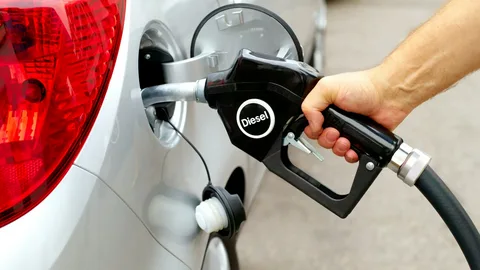Accidentally putting diesel in a petrol car is a common and costly mistake. The key to minimizing damage lies in recognizing the error and taking swift corrective action. In this detailed guide, we will outline the necessary steps to rectify this mishap, ensuring your vehicle is restored to optimal functioning.
Immediate Actions to Take
1- Stop the Engine Immediately
If you realize your mistake while still at the fuel pump, do not start your engine. Starting the engine can cause diesel fuel to circulate through the system, leading to further complications.
2- Do Not Turn On the Ignition
Even if you haven’t started the car yet, avoid turning on the ignition. Modern petrol engines use electric pumps to move fuel from the tank, and turning on the ignition could pump diesel into the engine.
3- Alert the Gas Station Attendant
Inform the gas station staff about the mistake. They might have protocols or tools to help you deal with the situation more efficiently.
Assessing the Situation
Determine the Amount of Diesel Added
Assess how much diesel you have put into the petrol tank. This information is crucial as it will help professionals understand the extent of contamination and decide on the best course of action.
Call for Professional Help
Contact your roadside assistance service or a professional mechanic. Explain the situation in detail, including the amount of diesel in the petrol tank and any actions you have already taken.
Draining the Fuel Tank
Professional Fuel Drain Service
The most effective way to address this issue is by hiring a professional fuel drain service. These experts have the right equipment to safely and efficiently remove the contaminated fuel from your car.
DIY Fuel Drain (If Necessary)
If professional help is not immediately available, you might consider draining the fuel yourself. However, this should only be attempted if you have the necessary skills and tools.
Required Tools and Safety Gear
- Fuel siphon pump
- Container for contaminated fuel
- Safety goggles
- Protective gloves
Draining Process
- Locate the Fuel Tank: Refer to your vehicle’s manual to find the fuel tank.
- Insert the Siphon Pump: Carefully insert the siphon pump into the tank.
- Pump Out the Diesel: Begin siphoning the contaminated fuel into a suitable container.
- Dispose of Contaminated Fuel Safely: Ensure the diesel is disposed of according to local regulations.
Cleaning the Fuel System
Flushing the Fuel Lines
Once the contaminated fuel is removed, the fuel lines must be flushed to eliminate any residual diesel.
- Disconnect the Fuel Lines: Follow the vehicle’s manual to safely disconnect the fuel lines.
- Use Clean Petrol to Flush the Lines: Pump clean petrol through the lines to remove any diesel residue.
- Reconnect the Fuel Lines: Ensure all connections are secure before proceeding.
Changing the Fuel Filter
Replacing the fuel filter is a crucial step, as it can trap contaminants and prevent them from damaging the engine.
- Locate the Fuel Filter: Refer to the vehicle’s manual.
- Remove the Old Filter: Carefully remove the old filter.
- Install the New Filter: Insert the new filter, ensuring it is properly seated.
Inspecting and Testing the Engine
1- Check for Residual Contamination
After draining and flushing, inspect the engine for any signs of residual contamination. Pay close attention to the fuel injectors and carburetor.
2- Start the Engine
Once you are confident that the system is clean, start the engine. Listen for any unusual noises or performance issues.
3- Test Drive
Take your vehicle for a short test drive. Monitor the car’s performance, checking for any signs of hesitation, misfires, or other irregularities.
Preventative Measures
1- Labeling Fuel Caps
Consider labeling your fuel cap as a reminder to use the correct fuel. This simple step can prevent future mistakes.
2- Double-Check Fuel Pump Labels
Always double-check the fuel pump labels before filling your tank. Make it a habit to confirm the correct fuel type.
3- Education and Awareness
Educate all drivers of your vehicle about the correct fuel type and the importance of verifying before refueling.
Conclusion
Fixing the mistake of putting diesel in a petrol car requires immediate and careful action. By following these detailed steps, you can minimize damage and restore your vehicle to proper functioning. Always seek professional assistance when possible, and take preventative measures to avoid similar incidents in the future.
Feel free to submit more guest posts through Links Building Servcies - Best Prices. Buy Author Account / 1$ Guest Post Here




![How to transfer money from Robinhood to bank account? [Steps]](https://hollywoodrag.com/wp-content/uploads/2024/08/Banking-Across-Europe.jpg)
















